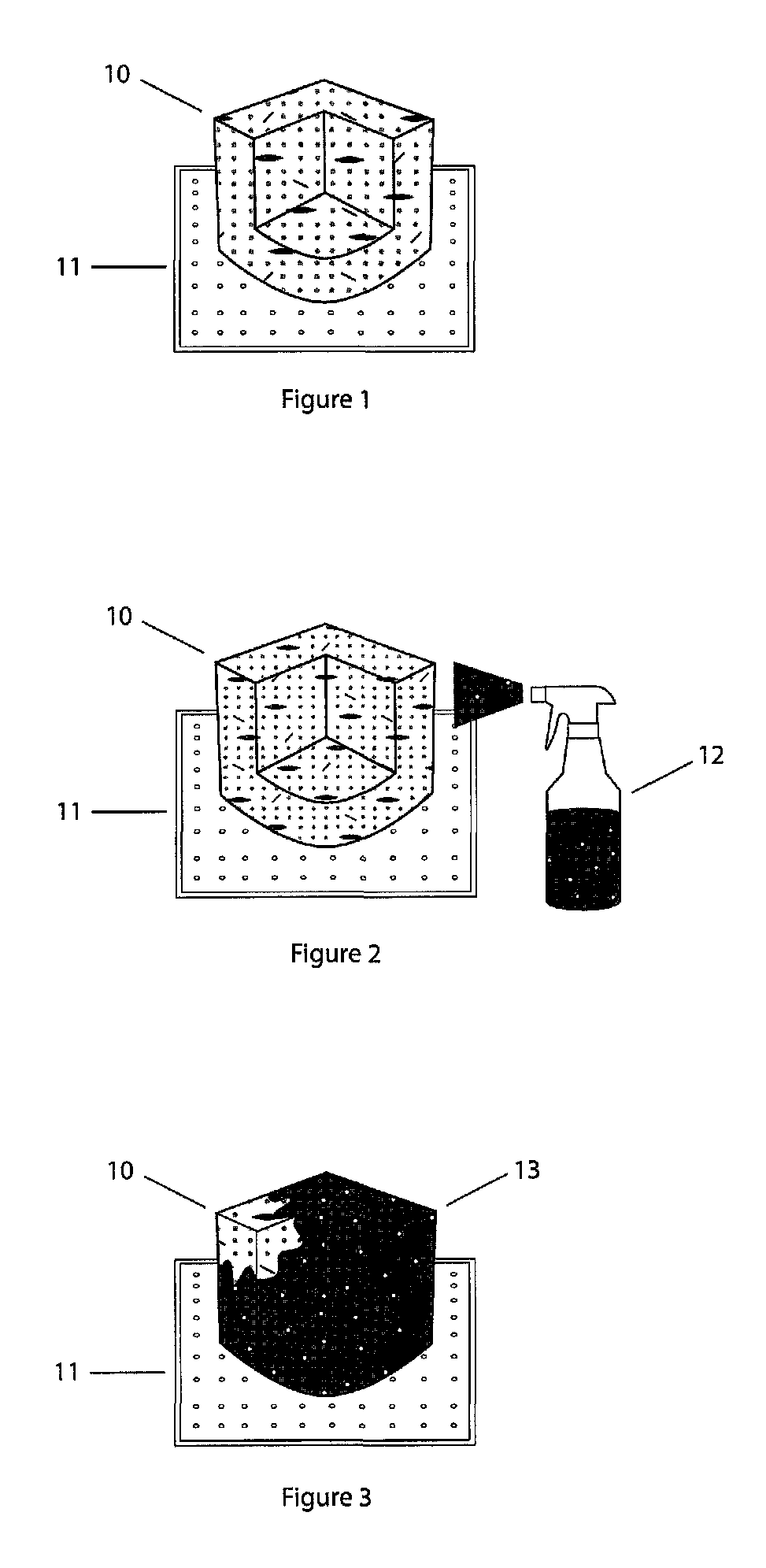Method of growing mycological biomaterials
a biomaterials and mycological technology, applied in the field of mycological biomaterials cultivation, can solve the problems of cumbersome storage and transportation, plastic tools are easily broken, and cannot be easily customized for different applications
- Summary
- Abstract
- Description
- Claims
- Application Information
AI Technical Summary
Benefits of technology
Problems solved by technology
Method used
Image
Examples
example 2
Consumable Paper Fiber Tool
[0041]1. A slurry of cellulose fibers, hemicellulose, water, and nutrients is created, sterilized, and subsequently vacuum-pressed on a buck of the desired form. This process molds the tool.[0042]2. Once the tool is formed, hardened, and dry, it may be filled with a mixture of sterilized buckwheat hulls and 20% (v:v) liquid culture inoculum of Ganoderma tsugae. [0043]3. The part is allowed to incubate in a controlled-environment incubator at 90% relative humidity, 28° C., and 2000ppm CO2.[0044]4. Once the part has been fully colonized and the tool is completely consumed, the produced product is dried to 0% moisture.
example 3
Molded Plastic Mesh
[0045]1. The tool is created by thermoforming a plastic mesh material over buck of desired form. The mesh has large enough cavities to allow maximum airflow and small enough cavities to prevent substrate from spilling through.[0046]2. The tool is filled with sterilized oat hulls and 20% v:v Ganoderma tsugae millet inoculum.[0047]3. The part incubates in a controlled environment chamber at 99% relative humidity, 50% O2 and 25° C.[0048]4. Once the substrate is fully colonized and the mesh has been overgrown and is no longer visible, it may be dried to 0% moisture.
example 4
Plastic Trays Partially Open to the Environment
[0049]1. The plastic tray is created by thermoforming a plastic sheet over a buck of desired form.[0050]2. The tool is filled with sterilized coconut coir and 20% v:v Ganoderma tsugae millet grain inoculum.[0051]3. The part is incubated in a controlled-environment incubator at 30° C., 95% relative humidity, and 4000 ppm CO2.[0052]4. Once the part is fully colonized, it is dried to 0% moisture.
[0053]The invention thus provides a process for growing mycological biomaterials in a tool that is at least partially consumed in the process. The invention also provides a tool to house mycological biomaterials as they grow while contributing to the growth process.
[0054]Still further, the invention provides a process for growing mycological biomaterials in an economical manner.
PUM
 Login to View More
Login to View More Abstract
Description
Claims
Application Information
 Login to View More
Login to View More - R&D
- Intellectual Property
- Life Sciences
- Materials
- Tech Scout
- Unparalleled Data Quality
- Higher Quality Content
- 60% Fewer Hallucinations
Browse by: Latest US Patents, China's latest patents, Technical Efficacy Thesaurus, Application Domain, Technology Topic, Popular Technical Reports.
© 2025 PatSnap. All rights reserved.Legal|Privacy policy|Modern Slavery Act Transparency Statement|Sitemap|About US| Contact US: help@patsnap.com

